The History of Fly Fishing : From 18th Century To Now
The History of Fly Fishing : From 18th Century To Now

The history of fly fishing has always intrigued people, often seen as a delightful way to spend a peaceful day in nature. However, the roots of fly fishing go way back in time, adding layers of meaning to this sport.
Fly Fishing is an ancient way to fly back to at least the second century A.D. Early signs show that European and Asian people were doing it for a long time before European settlers brought it to North America in the 1600s. Even though fly fishing is a great way to take a break from our busy lives, it has a lot of incredible stories behind it.
Even if more and more people like fly fishing, some questions are still there about where it came from and why people love it so much today or Who invented it?
In this article, we explore the history of fly fishing, from its earliest use to its inventors. Join us to learn about the development of fly fishing gear and its present state worldwide.
Origins of Fly Fishing
History of Fly Fishing starts with signs from the 2nd century A.D. People think it started in Japan before Europeans started doing it, and they liked it in England during the 16th century.

The British did a lot to make fly fishing a kind of art. They made up new ways to design flies and rods and got better at casting lines. They also tried different types of bait, like live bait and pretend bait, which we still use today.
They even got better at tying knots, which helped fishermen control where their lines went. All these things have become popular worldwide, and now millions of people enjoy fly Fishing in different parts of the world.
From being an old way of Fishing, fly fishing has become a super fun sport that keeps improving with new stuff each year. People love it because it lets them enjoy nature, face challenges, and feel free on the water. It’s no wonder that, despite its long history, many still love fly fishing.
Who Invented Fly Fishing?
While the Romans were among the first to popularize the practice of fly fishing, they cannot be credited as its inventors. Evidence from Claudius Aelianus’s writings suggests that fly fishing may have originated in Macedonia and later made its way to Rome around 200 AD.

However, the modern iteration of fly fishing is commonly attributed to Charles Cotton, an English poet and aristocrat. In 1676, Cotton, along with English writer Izaak Walton, authored a renowned book titled “The Compleat Angler.”
This influential work provides detailed instructions on catching trout or grayling in streams, offering insights into the freshwater fish prevalent during that era and recommendations on the most opportune times of the year for fishing.
History of Fly Fishing In America
History of Fly Fishing is rich, mainly centered around the Catskills in upstate New York. The fly fishing culture took off when English settlers came to New England and discovered runs of Atlantic salmon and brook trout streams similar to those in Great Britain.
During the late 1800s in the Catskills, a significant shift is known as the “Catskill Dry Fly Revolution.” Locals guided wealthy New Englanders using new and improved bamboo rods and updated flies that floated on the water. This revolution had a lasting impact on fly fishing worldwide for about a century.
As Americans moved westward, they found excellent fly fishing opportunities with cutthroat trout in the Rocky Mountains. On the Pacific Coast, steelhead and rainbow trout captured the attention of anglers in Washington, Oregon, and Northern California.
Over the years, rainbow trout were moved around the U.S. and even to other continents like Europe, Asia, and South America. In Argentina and Chile’s Patagonia region, rainbow trout thrived, making it one of the best places globally to fish for them, even though they weren’t native to the area before European contact.
Fly Fishing In Past
In the 18th century, fly Fishing had a dedicated following, with notable figures like Ernest Hemingway, presidents like Herbert Hoover and Dwight D. Eisenhower, and casting celebrity Joan Wulff keeping public interest alive. However, the number of fly fishers declined as tackle for smaller lures improved.
The trend shifted in 1992 when the novel “A River Runs Through It” was adapted into a film, sparking a renewed interest in fly fishing. Innovations in technology and design brought the sport into the 21st century.
Fly Fishing Today
Over the years, fly fishing gear has gotten a lot better. New and improved lines and rods, still made from bamboo and other wood materials, have made fly fishing more effective in catching fish. Around the mid-1940s, they started using glass and fiberglass rods, which, when paired with the new fly lines, made casting and presenting the fly even better. This is what we now call modern-day fly fishing.
Today, people do fly fishing everywhere, from catching trout in the mountains to tarpon in the ocean. It’s a type of outdoor activity that cares about nature and conservation. Fly fishermen and women have helped protect many rivers from being harmed by things like dams or overfishing. Companies like Orvis and Trout Unlimited have raised lots of money for fish conservation.

Moreover, nowadays, fly fishing is not just about catching fish for a basket. It started as a simple way with a short stick, some line, and a basic fly, and now it’s a big industry worth billions of dollars. The journey from the beginning to now is impressive, and there’s still a long way to go with new things to discover and try in the world of fly fishing.
Future of Fly Fishing
The future of fly fishing looks really bright! As more people get interested in this sport, we can expect cool new ways to make it easier and more fun. With the right tools and a good attitude, fly fishing could become something we can enjoy for a long time.
Let’s talk about a few things that might happen in the future of fly fishing:
- Easier Access to Fishing Spots: We might see more places where we can go fly fishing. This means it’ll be simpler for everyone to go out and enjoy nature while doing the sport they love.
- Better Gear for Different Places: In the future, there could be new and improved gear that works well in all kinds of water and with different kinds of fish. This would make the experience even more exciting and tailored to what each angler likes.
- Help from the Government: Our local governments might start helping out more by giving resources for learning about fly fishing and taking care of our environment. This way, we can learn how to fish responsibly and protect the places where fish live.
- Caring More about Nature: As time goes on, people might start caring more about keeping our environment safe. Fly fishing could lead the way in showing how we can enjoy nature without hurting it. This means using eco-friendly practices and being responsible while having fun.
These changes could make more people interested in fly fishing as a hobby. This might also bring more opportunities for jobs and businesses in places where fly fishing is popular. And, of course, it’s a great way for younger folks to connect with nature and learn to take care of our planet. So, the future of fly fishing seems really exciting, offering lots of fun while also teaching us to appreciate and protect the great outdoors.
Fly Fishing In Japan
In Japan, they practice fly fishing under the name tenkara, and its origins may go back even further than the time of the Romans. Unfortunately, because there are no written records, historians can’t confirm or deny this possibility.
What we do know is that tenkara started in the remote mountain areas of Japan, and some of the earliest signs of it, like bamboo rods and artificial fly lures, date back to the 9th century BC, according to The Tenkara Times.
While fly fishing in the Western world was often seen as a sport for the upper class, tenkara in Japan was a crucial way of life for people in isolated areas. It was essential for them to catch food for both personal use and selling.
Tenkara evolved with Japanese culture, especially after the Samurai era, which had a significant impact on the entire country.
Compared to Western fly fishing, tenkara uses simpler gear, putting more focus on the skill and technique of the fishermen. Developed in mountainous regions, tenkara is particularly well-suited for fishing in such environments. This traditional method has a unique history and approach, making it distinct from the Western practices of fly fishing.
The Improvement of Gear
As fly fishing became popular worldwide, the gear used in this activity went through some important changes. Let’s take a look at how fly rods, fly lines, and fly reels evolved.
Fly Fishing Rods
Back in the early days of western fly fishing, rods were mainly made of wood, often using Greenhart wood. Craftsmen would hollow out these wooden rods to make them lighter for easier casting.
In Japan, tenkara practitioners used bamboo rods, which were naturally hollow, lightweight, and very flexible. This bamboo rod influence later reached the Western world around the 18th century.
A crucial moment in fly fishing gear history was the creation of the split cane rod. In the 1870s, Hiram Leonard, who ran a fishing shop in Maine, introduced the split cane rod, also known as the Leonard fly rod. This 6-strip rod, made from Calcutta bamboo with cedar inlays in the grip, became the standard for U.S. fishing rods for almost fifty years.
Today, fly fishing rods come in various materials, and fiberglass is a popular choice. It’s known for its strength, durability, and flexibility, making it widely used in modern fly fishing.
Fly Lines
Going back to Claudius Aelianus, one of the earliest mentions of fly fishing lines describes them as being equal in length to the rod. However, it wasn’t until the 18th century that fly lines became a significant focus as the fly fishing industry became more commercialized.
The invention of dry fly fishing played a crucial role, leading to the distinction between floating and sinking fly lines.
Another innovation was the development of the sinking tip fly line. While fly lines have grown longer over time, they remain shorter than those used in traditional fishing. This is because fly fishing prioritizes accuracy and presentation over the distance of a cast.
Fly Reels
Similar to fly rods, early fly reels were often made from wood. Brass was another popular material due to its availability and malleability. As the Industrial Revolution unfolded from 1760 to 1840, fly fishermen seized the opportunity to experiment with materials like hard rubber and nickel silver for reels.
Today, fly reels are commonly crafted from lightweight aluminum or magnesium to maintain the light feel of the fly rod. Orvis, in a 2020 article, provided an excellent overview of the 19th-century development of fly reels, featuring remarkable photographs of early designs.
Technological Improvements
Technological improvements played a crucial role in the evolution of fishing equipment, particularly reel design, during the 18th and 19th centuries.
In England, the ‘Nottingham reel’ was a prevalent design in the late 18th century. This wide drum reel allowed bait to drift a long way with the current. While geared multiplying reels didn’t gain popularity in Britain, they succeeded in the United States.
George Snyder of Kentucky modified similar models into the first American-made bait-casting reel in 1810.
The material used for fishing rods transitioned from heavy native woods to lighter, more elastic varieties imported from South America and the West Indies. Bamboo rods became favored from the mid-19th century, offering a light, strong, hexagonal design with a solid core. Fly fishing pioneers like George Cotton utilized long rods and light lines, relying on the wind to deliver the fly to the fish.
In the 19th century, Fishing was a popular recreational activity. Tackle design improved in the 1880s with the introduction of new woods for fly rods, enabling the casting of flies into the wind on silk lines. These lines allowed for greater casting distances, but early versions required frequent coating with dressings to float and drying to prevent waterlogging.
Tangles, or ‘backlashes’ in the U.S., were common issues. To address this, the regulator was invented to spool the line evenly and prevent tangling.
Charles F. Orvis, an American, introduced a novel reel and fly design in 1874, which is considered the first thoroughly modern fly reel. The Orvis Company, founded by Orvis, played a significant role in institutionalizing fly fishing by supplying angling equipment through tackle catalogs.
In 1905, Albert Illingworth patented the modern fixed-spool spinning reel. His design featured a line pickup that orbited around the stationary spool, allowing for the casting of much lighter lures than conventional reels. This innovation marked a milestone in reel technology.
Popular Locations For Fly Fishing
Fly fishing is a popular hobby, and people often travel to different places to find the best spots. The United States is one of the top countries for recreational fly fishing, with places like Alaska, Montana, Colorado, and Oregon being famous. Each of these locations offers different kinds of fish to catch and unique landscapes to explore.
Alaska is known for its productive Salmon runs, while Montana has rivers with large trout that need skill to catch. In Colorado, high-altitude lakes provide a chance to catch big trout, and Oregon has diverse rivers where you can fish for steelhead, Salmon, and wild trout.
If you’re planning a fly fishing trip, think about the kind of fish you want to catch and the type of terrain you prefer, whether it’s streams on hillsides or lakes in the mountains. This will help you decide where to go. Some tips for successful fly fishing include using the right fly for the type of water and understanding what the fish like to eat.
Look around and see what insects and creatures are in the area, then choose a fly that looks like them in terms of size, shape, and color – this is called “matching the hatch.”
Remember to consider the weather and water clarity when picking a fly pattern. If it’s windy or cloudy, bigger or darker flies might work better. The speed of the water also matters – slower currents need heavier flies, and faster currents need lighter ones. Don’t be afraid to try different patterns to see which one works best for you.
Targeted Fly Fishing Species
When planning a fly fishing trip, it’s essential to consider the type of species you want to target and the terrain you prefer, whether it’s hillside streams or alpine lakes. Understanding the kind of water you’ll be fishing and researching the habits of the fish you’re targeting can help narrow down your fly selection.
Matching the hatch—choosing a fly that resembles the local insects—can also significantly impact your success.
Additionally, weather conditions and water clarity play a role in selecting the correct fly pattern. Factors like wind or cloud cover may influence the effectiveness of more prominent or darker flies compared to smaller or lighter-colored ones.
Current speed is another consideration, with slower currents requiring heavier flies and faster currents favoring lighter ones.
Social Advantages Of Fly Fishing
Fly fishing, a sport with a history spanning centuries, has evolved into a beloved recreational and competitive activity. In the United States alone, over 8 million people participate in fly fishing each year, highlighting its widespread popularity.
The social aspect of fly fishing is as crucial as its technical elements. It offers a splendid way to appreciate nature while engaging in friendly competition with fellow anglers. Moreover, it provides relaxation and therapy for many enthusiasts.
Across the globe, fly fishing groups offer a platform for individuals to share their passion, exchange stories, and build friendships. These groups foster a sense of camaraderie among participants, turning fly fishing into an experience that goes beyond the mere act of angling.
Fly fishing extends its impact beyond being a mere sport; it becomes an avenue for people to connect with nature and form meaningful relationships with like-minded individuals. Its growing popularity reinforces its significance and its ability to unite people from diverse backgrounds.
Economic Advantages Of Fly Fishing
Turning to the economic side of fly fishing, it has emerged as a popular pastime worldwide, contributing to the economic well-being of the industry and local economies. This unique form of angling requires specialized equipment like rods, reels, lines, lures, and clothing, providing opportunities for businesses to thrive.
Shops, online stores, and other retail outlets benefit from the sale of these items.
The economic benefits go beyond retail sales. Fishing trips and guided tours offer additional income to guides with local knowledge. Furthermore, communities in areas renowned for fishing attract tourists who spend money on food, lodging, transportation, and other goods. This influx of revenue stimulates local economies, creating job opportunities and fostering growth.
The impact of fly fishing on the economy extends to conservation efforts. Increased activity on streams prompts efforts to protect water quality and fish populations, contributing to a healthier environment.
Final Words
As we wrap up the enthralling journey through the history of fly fishing, we stand at the banks where tradition meets innovation. From ancient artistry to a modern way of life, fly fishing and urban fly fishing has evolved, offering enthusiasts more than just a pastime.
In the 20th century, iconic figures and innovative materials transformed the sport into a rhythmic melody of casts, a camaraderie on riverbanks, and a connection with nature. Today, fly fishing is a celebration beyond the catch – it’s about the serene flow of waters and the shared passion along the river’s edge.
As we conclude this exploration, let the rich tapestry of fly fishing’s history inspire you. Tie your flies, cast your line, and become part of the ongoing saga by the riverbanks. Your next adventure awaits with every cast

Meet Ibrahim Khan, an avid angler and author in Fishing Teach. He shares his wealth of knowledge from his 16 years of experiences in fishing. His articles are a captivating blend of practical insights and thrilling tales that invite readers into the enchanting world of fishing.
Ibrahim’s guides are your go-to guide in the realm of fishing on this informational site. Hailing from a coastal paradise, Ibrahim’s passion for angling is the heartbeat of his life.

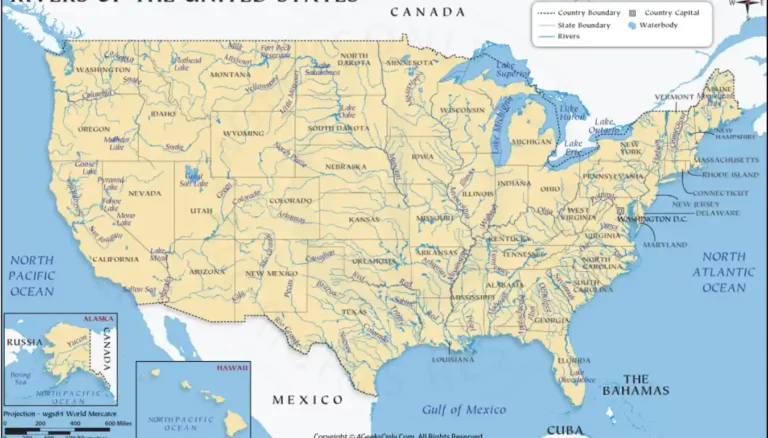

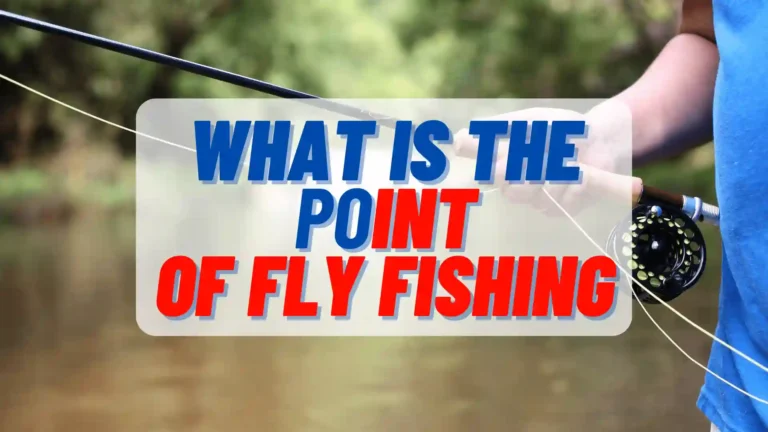
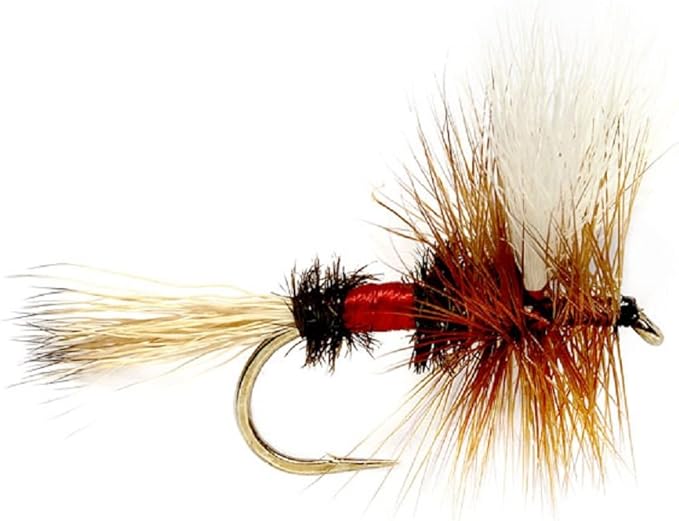
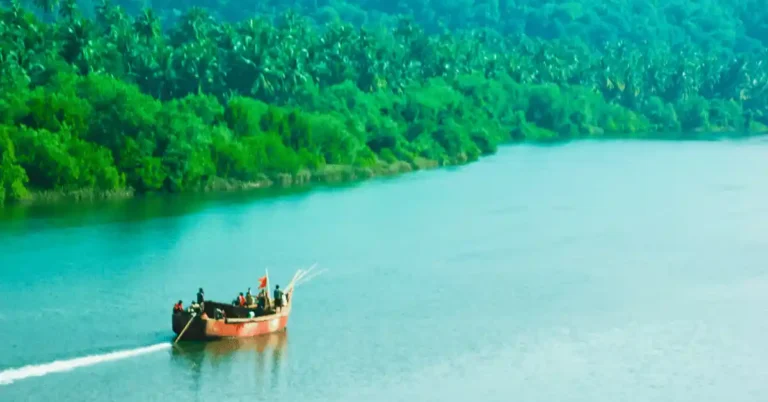
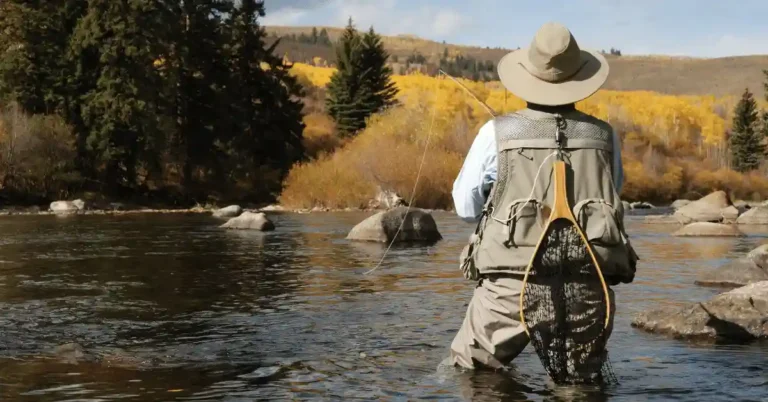
3 Comments